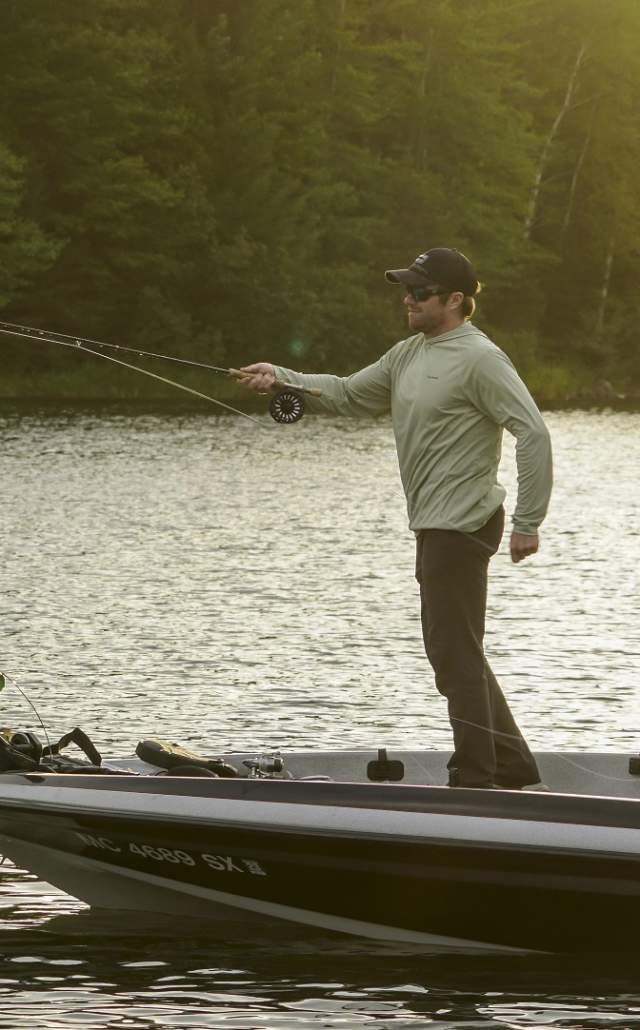DNR Fishing Report
April 17, 2024
Did you catch a Master Angler fish? The Master Angler program includes more than 45 species for which you can compete for honors. The Master Angler Patch is awarded to all entries meeting the established minimum length for each species. Visit Michigan.gov/MasterAngler to apply.
All anglers 17 years of age and older are required to have a fishing license.
Little Bay de Noc: Perch anglers reported fair to good fishing along the east shoreline, using minnows or worms on perch rigs. Smallmouth anglers reported slow fishing, although some were able to find a few fish.
Manistique: Anglers reported catching suckers and found some steelhead. Most anglers were drifting beads.
Marquette: Recent fishing for coho salmon on the break wall seemed to slow. Boat anglers found some luck when fishing for coho salmon in the lower harbor, with anglers averaging about two fish per outing. Trolling blue and silver spoons as well as fire tiger stripe-patterned Rapalas all seemed to work well. Most fish were caught in 8 to 20 feet of water and closer to shore. Anglers who were floating down the Chocolay River did well catching steelhead and brown trout. The Carp River remained steady for steelhead and at the mouth, whitefish were reported to have been caught off crawlers. Spawn bags and wax worms did well for steelhead in both the Carp and Chocolay rivers, along with champagne or orange beads.
Au Train: The smelt were reported to have started moving up the rivers, with the coho salmon right behind them in the lake. Good numbers of coho salmon and steelhead were caught when trolling or casting. Most fish were caught in 8 to 20 feet of water and closer to shore. Blue and silver spoons were reported to have done well for coho salmon. Fire tiger or bright orange and gold Rapalas worked well for brown trout and steelhead out by the northwest side of the island and close to shore by the river mouths.
Keweenaw Bay/Huron Bay: Anglers who trolled and jigged for lake trout found some success during morning and afternoon hours. Other successful fishing trips included trolling for coho salmon and splake. Most fish were caught during the morning hours; however, fish were reported to be caught all day. As the water warms up and continues pushing out of rivers, expect smelt to begin moving for spawning!
South Portage Entry Canal/Big Traverse Bay: Anglers had good success during trolling and jigging events when targeting lake trout. Lake trout were found both below and above 100 feet of water and throughout the water column. Anglers had less luck when trolling for salmon, brown trout and rainbow trout. As the water warms up and continues pushing out of rivers, expect smelt to begin moving for spawning!
St. Ignace: Boat anglers reported catching lake trout when using jigs with cut bait. The water level in the Carp River was reported to have declined, and smelt were yet to have run upriver.
Les Cheneaux/Detour: Anglers in the Hessel area reported catching a few splake off the pier. Several were also caught when trolling within Hessel and Wilderness bays. There were reports of a few smallmouth bass and pike seen swimming around in the area as well.
Ontonagon River: Fishing activity was reported to have been slow. High turbidity and low visibility in the river waters limited anglers’ ability to fish. Anglers who were able to make it out reported catching very few fish.
Ontonagon/Silver City/Union Bay: Fishing efforts from these ports seemed to increase as a result of the warmer weather. Boats anglers had some luck finding coho salmon and brown trout in low numbers. Anglers reported a very slow bite.
Black River Harbor: Coho salmon and brown trout were reported to be the common catch by anglers, with coho salmon being caught in high numbers. Anglers reported an active bite when trolling artificial lures in shallow waters. Shore anglers also reported catches of coho salmon and brown trout.
Fishing tip: How to catch your own nightcrawlers
Are you interested in catching and keeping your own nightcrawlers? It’s fairly easy to do – just follow these simple steps:
- Know where to look. Scout locations such as parks, playgrounds and open, grassy areas after a good rain. Look for nightcrawler castings (the little piles of dirt they leave behind), and then plan to visit again following the next good rain.
- Know when to collect. Nightcrawlers are best caught an hour or so after dark. Bring the right equipment. Nightcrawlers are sensitive to vibrations, so wear lightweight shoes. They’re also sensitive to bright light, so consider rigging your flashlight with a red cover over the lens.
- Store them properly. When you catch nightcrawlers, just lay them on top of some storage bedding – don’t mix them in. This will allow you to remove sick or dead ones more easily.

